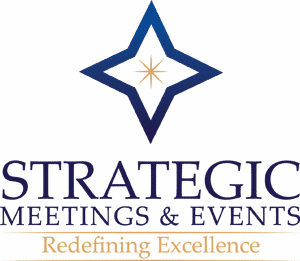Hotel Higher Season: Calendar Soft Spots Still Exist, New Rules Apply
By Tony Bartlett
After three years of escalating hotel room rates, especially in top meetings destinations, it’s no secret to meeting planners that opportunities for good hotel deals are getting harder to find at any time of year.
 With destinations across the country filling in soft spots, seasonal rate differences have been leveling out. However, while they might be less predictable than they once were, seasonal values have not entirely gone away.
With destinations across the country filling in soft spots, seasonal rate differences have been leveling out. However, while they might be less predictable than they once were, seasonal values have not entirely gone away.
“There are still great deals to be found,” says Donovan Shia, president of Corpus Christi, Texas-based CVB HotRates.com , which represents more than 40 CVBs across the country.
Although less of a bargain than they once were, low and shoulder periods remain a major avenue in the meeting planner’s search for value, he adds.
Less Flexibility
Although hotel occupancy growth has flattened out, new hotel supply continues to be absorbed and rates are continuing to climb, says Bill Briscoe, chief industry relations officer for Scottsdale, Ariz.-based HelmsBriscoe, a site selection and meetings planning services company.
“It’s tough in a seller’s market,” he says. “Major cities like New York, Chicago and Las Vegas are obviously doing very well, although hotel occupancies have generally leveled in the last year,” he says. “Planners are more open and are looking at secondary markets where there is more availability and rates they can handle, and new destinations are developing.”
At the same time, peak seasons in some destinations are expanding and providing less flexibility for negotiating than ever, he adds. While states like Florida and Arizona still offer much better deals in summer, they “stick to their guns January through March.”
Christy Lamagna, president of Strategic Meetings and Events, a meeting planning firm based in New York City and San Francisco, has a similar observation. While Lamagna would once send RFPs to hotels in three different cities, she now sends them out to at least seven or eight.
“It’s become more difficult to negotiate. Rates have been rising. We’ve expanded our search,” she says.
One strategy she recommends is to look on the outskirts of cities for lower rates. While planning a recent meeting for a corporate group of 40 people, Lamagna was able to find the same rates at The Ritz-Carlton Lodge, Reynolds Plantation, one hour east of Atlanta, as she did at a much less upscale hotel at the Atlanta airport.
For corporate retreat groups, she has looked to ski resorts during summer, finding value dates at properties in Utah, Vermont and British Columbia.
“Rates are significantly lower. With no distractions, they are ideal,” she says.
Hotel Destination Differences
Turning to sources such as CVB HotRates.com is another way to find good deals. The company, which was formed in 2004 with 17 CVB partners, now has 42 bureau partners, which fund the free planner service. CVBHotRates.com focuses on short-term bookings from six to 18 months before the meeting. Its Web pages can be accessed through the CVB websites or its own site.
“When we started, the country was coming off a downturn and we listed distressed properties,” Shia says. “With the robust economy, the climate has changed and we’re more geared to helping meeting planners.”
“We’re seeing an increase in repeat visitations.” He emphasizes that each destination is very different, that most hotels update their offerings on a monthly basis and that situations can easily change.
“Orlando has a broad range of venues and incredible deals. A room that could be $300 in March might be half price in November and December. And Phoenix has rooms at almost half price in summer months,” he says.
Citing other examples, he says that California’s Silicon Valley is almost the opposite of Phoenix in that it offers competitive rates in October, November and December. Destinations offering good winter deals include Myrtle Beach, N.C. and Hilton Head, S.C.
“In Texas, Houston hotels usually offer lower rates in summer and higher rates in the fall, whereas San Antonio has no defined seasons and offers deals during pockets of lower demand,” Shia says.
He also observes that today’s seller’s market is unlikely to last forever.
“Hotels are happy, but that can change in a flash,” he notes. “They have perishable inventory. Major cities are now in an odd situation. They used to be able to sit back. They didn’t have the competition. New convention centers have opened.”
Here’s a look at what’s happening with seasonal rates in meetings destinations around the country:
Las Vegas
When it comes to finding soft spots in the meetings calendar, Las Vegas, which enjoys the highest occupancies of any U.S. city, can be the ultimate challenge.
According to figures from the Las Vegas Convention & Visitors Authority, the city enjoyed an average hotel occupancy rate of 93.2 percent last year, with only December rates dipping below 90 percent. Room rates were lowest during June through September and in December.
Historically, Las Vegas’ low season has been Memorial Day to Labor Day, excluding holidays and weekends.
Carling Dinkler, president of Custom Conventions, a DMC and meeting planning firm with offices in Las Vegas and New Orleans, says that summer months and midweek days are by far the best times to find favorable dates and rates in Las Vegas—unless a major trade show happens to be in town.
“You know the hotels are going to fill the rooms one way or another, but there are all kinds of values here, short-term and long-term,” he says. “Meeting planners should be flexible and know when major conventions and trade shows are being held.”
By using these strategies, Shia says he booked a group of 500 people at an upscale casino property in March for a fall meeting at “a very decent rate.”
While Las Vegas, which already offers 133,000 hotel rooms, has always been able to absorb any new hotel supply, there is some speculation that an enormous amount of new construction under way could make things more favorable for planners. Another 41,000 hotel rooms, about half of them now under construction, are expected to open by 2010.
Anaheim and San Diego
Two cities in Southern California illustrate just how seasons can vary from one area to another and do not always relate to climate. San Diego and Anaheim, with downtowns less than 100 miles apart, are much further apart when it comes to seasonal rate fluctuation.
 Known for its Mediterranean climate and theme parks, Anaheim is home to over 20,000 hotel rooms and the 1.6 million-square-foot Anaheim Convention Center. Last year, meetings and conventions visitors were up 2 percent over 2005, according to the Anaheim/Orange County CVB.
Known for its Mediterranean climate and theme parks, Anaheim is home to over 20,000 hotel rooms and the 1.6 million-square-foot Anaheim Convention Center. Last year, meetings and conventions visitors were up 2 percent over 2005, according to the Anaheim/Orange County CVB.
Charles Ahlers, the CVB’s president, says the first quarter of the year is Anaheim’s busiest time for meetings and conventions and also brings a fair number of leisure travelers escaping from colder climates.
“Leisure business is huge in the summer,” he adds. “Spring is better than fall. Fall is the downtime when we are scrambling for business, although the weather is nice year-round. It’s a great time for meetings.”
Fall room rates, he adds, can be as much as 15 percent lower than they are during spring.
This year will be the third consecutive year that the Anaheim CVB embarks on a consumer advertising and promotional campaign to attract fall leisure visitors. Ahlers says the promotion—which last year was called “Fall for OC”—has been successful in making fall a stronger season.
In San Diego, fall is not noticeably less busy than other times of year, according to Steve Schell, CMP, associate vice president of sales for the San Diego CVB.
“We’re kind of unique. We have 12 months of great weather and we don’t really have traditional seasons,” Schell says, adding that summer is usually a softer time for San Diego’s inland properties than those at beaches.”
Low periods, he says, are in and around holiday periods, when the CVB together with hotels might launch a short-term blitz campaign to attract meetings groups.
Portland
Portland, Oregon’s largest city, has the Oregon Convention Center, the Pacific Northwest’s largest convention facility, with 255,000 square feet of contiguous exhibit space, 50 meeting rooms and two grand ballrooms.
Like many other cities, its convention center occupancy is boosted by consumer shows during the first two months of the year, a time when hotels traditionally need more business.
Mike Smith, vice president of sales at the Portland Oregon Visitors Association (POVA), compares a CVB to a dating service in that it’s designed to get people together, compromise and make the right fit.
“My advice to meeting planners looking at any destination is to contact the CVB,” he says.
According to Smith, Portland traditionally does strong leisure travel business in summer, while spring and fall are prime times for meetings. While winter is the slowest time overall, this is starting to change.
“Winter used to take a nosedive, but we’ve been able to even out the seasons. They are not hard and fast, not the big line in the sand that they use to be,” he says.
However, he adds that Portland’s hotel rates have not increased as fast as they have in other major cities on the West Coast.
Scottsdale
Scottsdale, Ariz., known for its upscale resorts, plentiful golf courses and more than 330 days of sunshine a year, has a peak season that runs from January through April. Low season in Scottsdale is June through August, while fall and late spring are the shoulder seasons.
Dan Tavrytzky, vice president of sales and services for the Scottsdale CVB, says that during the summer meetings groups can get rates of 60 percent off peak-season rates “with the same excellent product and service.”
“If you are going to be in meetings all day, you can take advantage of the fabulous summer evenings. After meetings, there is time for 18 holes of golf,” he says, adding that Scottsdale summers are dry rather than humid.
According to Tavrytzky, more groups are choosing to come to Scottsdale during the low season.
“We’ve been getting more SMERF business,” he says. “A decade or so ago we had hotels that closed during the summer.”
Last year, Scottsdale hotels experienced a 69.9 percent average occupancy rate, about the same as in 2005. During the same period, room rates averaged $164.19, up by 12 percent from the year before.
Denver
Denver is a city undergoing a transformation. The Colorado Convention Center, which expanded three years ago, includes 584,000 square feet of exhibition space on one level. Its 1,100-room convention headquarters hotel, the Hyatt Regency Denver, was unveiled in late 2005.
 The Denver Metro CVB promotes the city’s sunny, dry climate, which permits golf courses to be open year round. It also emphasizes its close proximity to the Rockies.
The Denver Metro CVB promotes the city’s sunny, dry climate, which permits golf courses to be open year round. It also emphasizes its close proximity to the Rockies.
According to Richard Grant, spokesman for the CVB, Denver’s hotels are most flexible with rates from December through March.
“Groups have the advantage of meeting here when it is low season, but they are only 90 minutes from Colorado’s mountain resorts, where it is high season,” he says. “This makes it possible to combine an economical business meeting with a vacation.”
Grand Rapids
Grand Rapids, Mich., is an up-and-coming meetings destination where the best weather happens to occur during its low season.
Between 2003 and 2005, its downtown performing arts center and arena morphed into the DeVos Place convention center, which includes a 162,000-square-foot exhibit hall and a 40,000-square-foot ballroom.
The facility also features the 700-room Amway Grand Plaza headquarters hotel. This fall, a 340-room JW Marriott is set to open, also connected to the center, increasing the number of rooms within walking distance to 1,500. A $75 million arts museum is also opening downtown this fall.
The Grand Rapids/Kent County CVB targets groups of 1,000 on peak nights, although the city has hosted groups of up to 6,000. Earlier this year, the city was chosen to host the 2009 Religious Conference Management Association conference. “Our hotel rates are extremely competitive and we can put together a good meetings package, especially in the summer,” says Steve Wilson, president of the CVB. “We have an interesting dynamic in that downtown is busy in winter when there is a lot going on. Sidewalks are heated and snow melts when it comes down.”
Summer in Grand Rapids offers a comfortable climate and a lot of opportunities for golf and other outdoor recreation. It is a slow time for the city in terms of business, he adds.
Kansas City
Kansas City is another destination that offers seasonal values. According to Denise DeJulio, director of convention sales for the Kansas City Convention & Visitors Association (KCCVA), late fall through winter is the time when local hotels need business. Peak season is June through September, with spring as the shoulder season.
“In late November, December, January, and February, hotels typically have better rates, although in January we have consumer shows,” she says.
Early this year, the KCCVA reported that following a successful 2006, it had already booked 224 meetings for 2007, including 23 citywides with more than 1,000 peak room nights, and was well ahead of its historical booking pace for 2008 and beyond.
In 2006, hotel room revenues were up 9.3 percent compared to 8.1 percent nationally, according to KCCVA figures.
Undergoing a $4 billion renaissance, downtown will see the fall opening of the Power & Light District, a new nine-block entertainment neighborhood, and the 18,500-seat Sprint Center arena. Nearby, the Kansas City Convention Center, which has 388,800 square feet of column-free exhibit space, opened a new 46,450-square-foot ballroom in late April.
New Orleans
Planners looking for seasonal values will find plenty of them in New Orleans, according to Custom Conventions’ Dinkler.
“Booking short-term meetings in New Orleans is no problem. It’s the best buy in the country right now,” he says. “Business has been picking up and it has been exceeding our expectations. But the city is still missing individual business travel.”
Last November, 15 months after Hurricane Katrina, the city’s Morial Convention Center completed a renovation. In January, the New Orleans Metropolitan CVB announced a new international branding and marketing campaign, “Forever New Orleans.”
“We’re back to our normal seasonal pattern with terrific values, significantly lower room rates and great availability in our summer low season,” says Jeff Anding, director of convention marketing at the CVB.
With most hotels reopened, occupancies are down so far this year. According to figures from Smith Travel Research (STR) for the first two months of 2007, the metro area’s average occupancy rate stood at 61.6 percent, down from 80.4 percent during the same period last year. Average daily room rates in New Orleans declined by 8.3 percent.
About 95 percent of New Orleans’ central business district properties have reopened. Of the larger hotels, only the Hyatt and Fairmont are closed.
Charlotte
Charlotte, N.C, the country’s second-largest banking center, has been filling in its softer summer periods.
The Queen City has $5 billion in new development planned or under construction. Among the projects is a 100,000 square-foot expansion of the Charlotte Convention Center, scheduled for completion in late 2009. A new major attraction for the city, the NASCAR Hall of Fame, is also under way.
Charlotte is a destination in demand. While STR’s figures show that the top 25 U.S. metro areas experienced only a 0.5 percent increase in average occupancy last year, Charlotte’s grew by 6.8 percent. The city averaged 64.4 percent occupancy for the year and an average daily rate of $75.64, up 11.4 percent over 2005.
Jeff Hewitt, senior director of sales at Visit Charlotte, says that because of the city’s mild climate, Charlotte’s “cyclical demands based on weather are minimized.”
“Our highest-demand periods have been spring and fall,” he says. “Summer months are considered the soft or shoulder months. Hotels offer more attractive rates in summer and can be even more accommodating if groups meet over the weekend.”
However, he adds that the off-peak summer months now produce some of the highest occupancies of the year. To drive occupancy, he says, Visit Charlotte is focusing on rate-sensitive groups, such as religious meetings and amateur sports events that meet in summer.
Tampa
 Tampa saw the opening of a 360-room Embassy Suites, connected to the 650,000 square-foot Tampa Convention Center, a year ago, bringing the number of hotel rooms within a four-block radius of the center to more than 4,100. Work is continuing on the two-mile Riverwalk project, which is about half completed.
Tampa saw the opening of a 360-room Embassy Suites, connected to the 650,000 square-foot Tampa Convention Center, a year ago, bringing the number of hotel rooms within a four-block radius of the center to more than 4,100. Work is continuing on the two-mile Riverwalk project, which is about half completed.
The city’s peak season has traditionally been January through mid-April, while its shoulder season is mid-April through May and mid-September through November. The low season occurs in June through mid-September and in December.
“We still have seasons. While they have strengthened over the years, our low and shoulder seasons still contrast to our peak,” says Norwood Smith, Tampa Bay CVB’s vice president of sales.
“We’re very focused on business that will consider us during our low season when the planner will encounter far more lenient rates and discounts, as great as 50 percent for both hotels and facilities,” he says.
Smith adds that depending on the group’s economic impact, the CVB sometimes has the flexibility to underwrite rental rates, transportation or some hosted functions.
Virginia Beach
Virginia Beach, Va., a family playground with a summer peak season, opened the first phase of its $202.5 million convention center in August 2005. The second phase, with most of the exhibit space, opened in January.
The Virginia Beach Convention Center includes a 150,000-square-foot, column-free exhibit hall and a 31,029 square-foot ballroom. Within a two-mile radius are 3,500 hotel rooms.
The Virginia Beach CVB targets groups of 400 to 3,000 for the center.
Al Hutchinson, director of convention sales for the CVB, says the destination can put together a package offering discounts of between 25 percent and 100 percent off the convention center’s rental rates, depending on the number of room nights and food and beverage commitment. In addition, November through April is low season in the city, while the shoulder months are September and October.
“Hotel rates are much more attractive and affordable then and that’s a time when lots of meetings are held,” he says.
Along with Virginia Beach, the state of Virginia has received a convention facility boost with the expansion of the Greater Richmond Convention Center in Richmond in 2003, and the opening of the Hampton Roads Convention Center in Hampton in 2005.
“Obviously, we compete on occasion. But we compete for national business and the majority of our competition is national,” Hutchinson says.
—Freelancer Tony Bartlett, who has been writing about the travel industry for over 20 years, is a frequent contributor to Meetings West.
Tags: Hotel Higher Season: Calendar Soft Spots Still Exist, New Rules Apply, Hotel(s), Hotel, Strategic Planner, Strategic Planners, Strategic Events, Event Planning, Corporate Meetings, Corporate Events, Meetings Focus, Meetings Today





